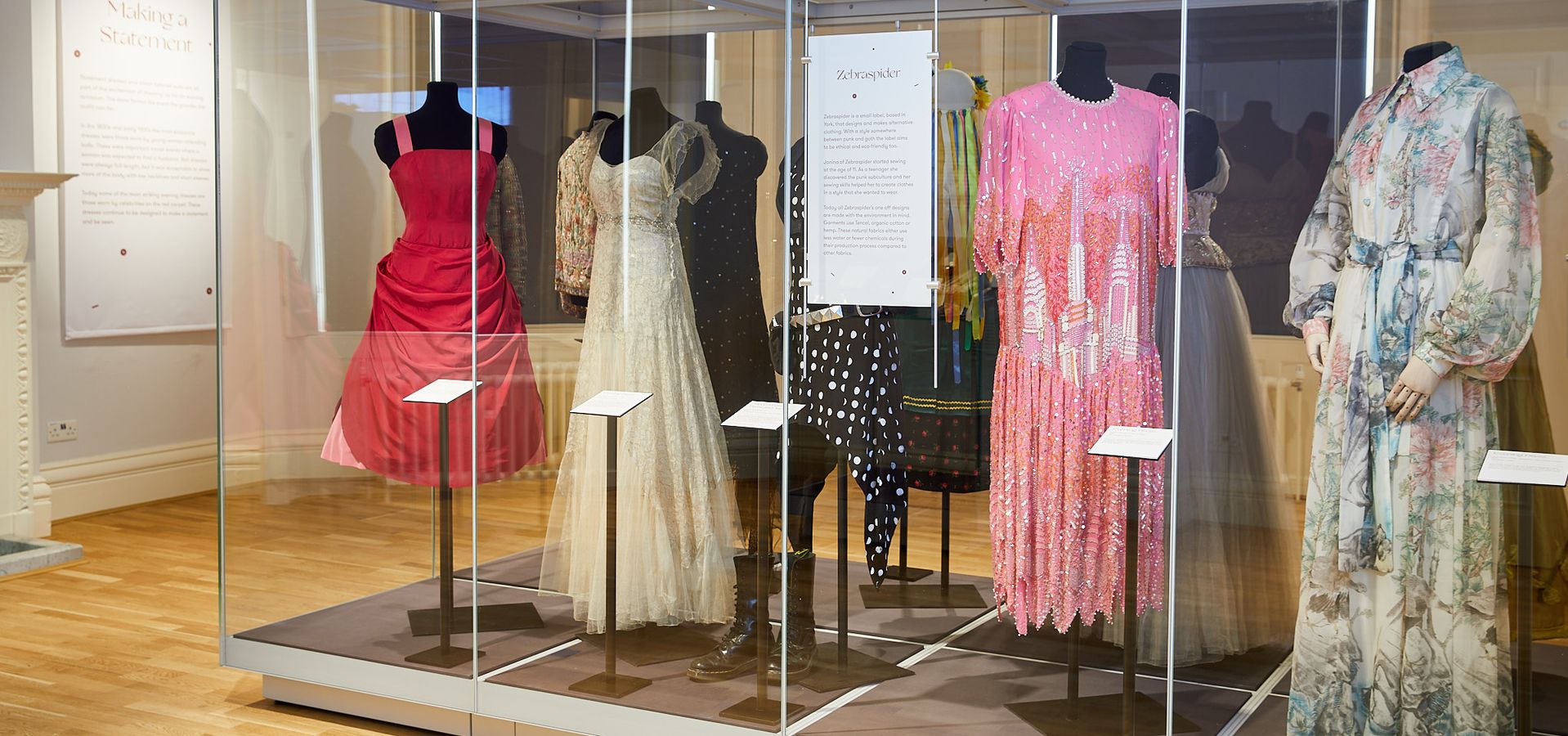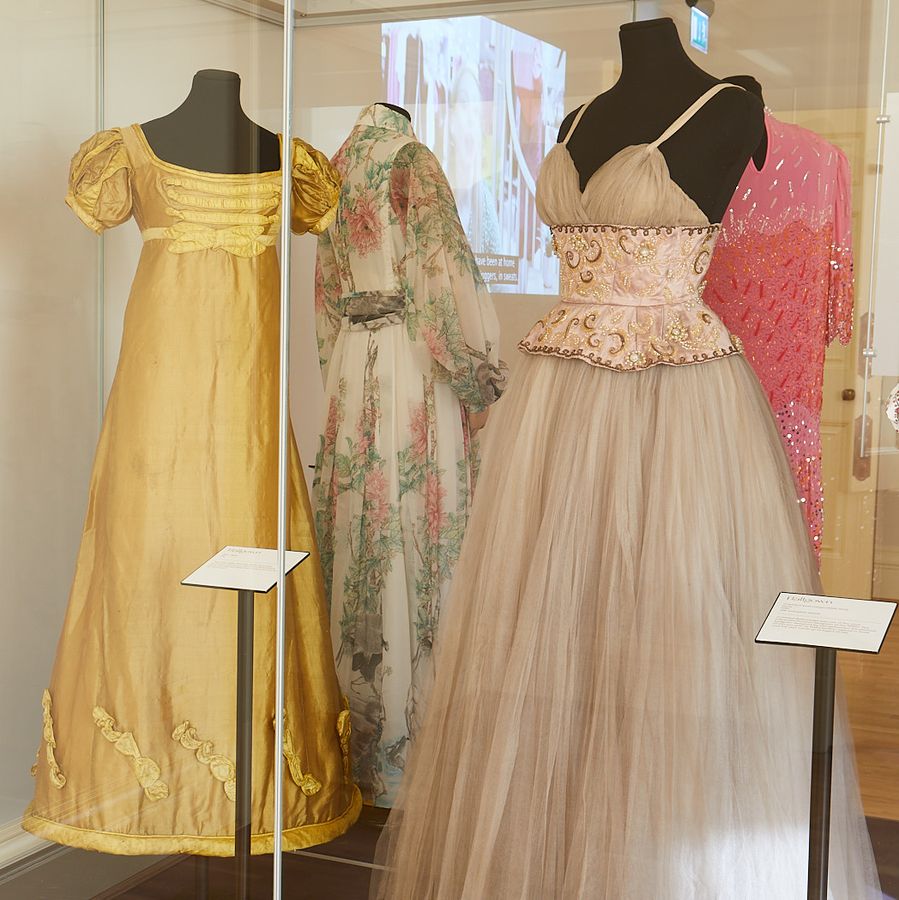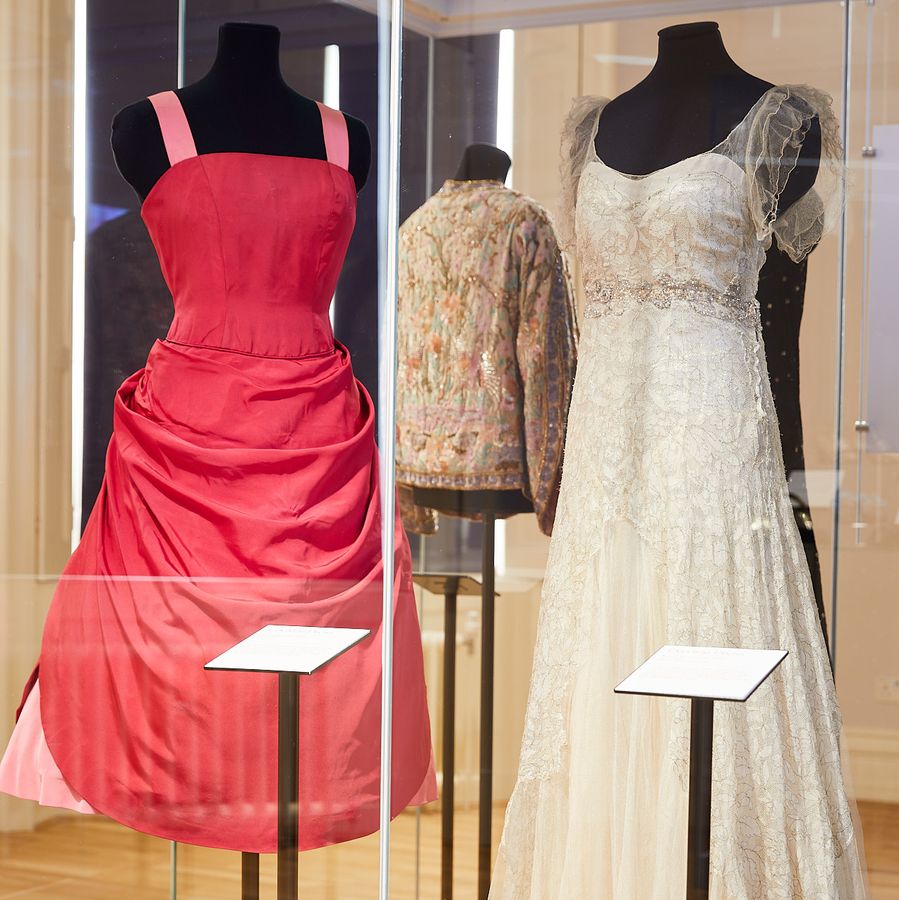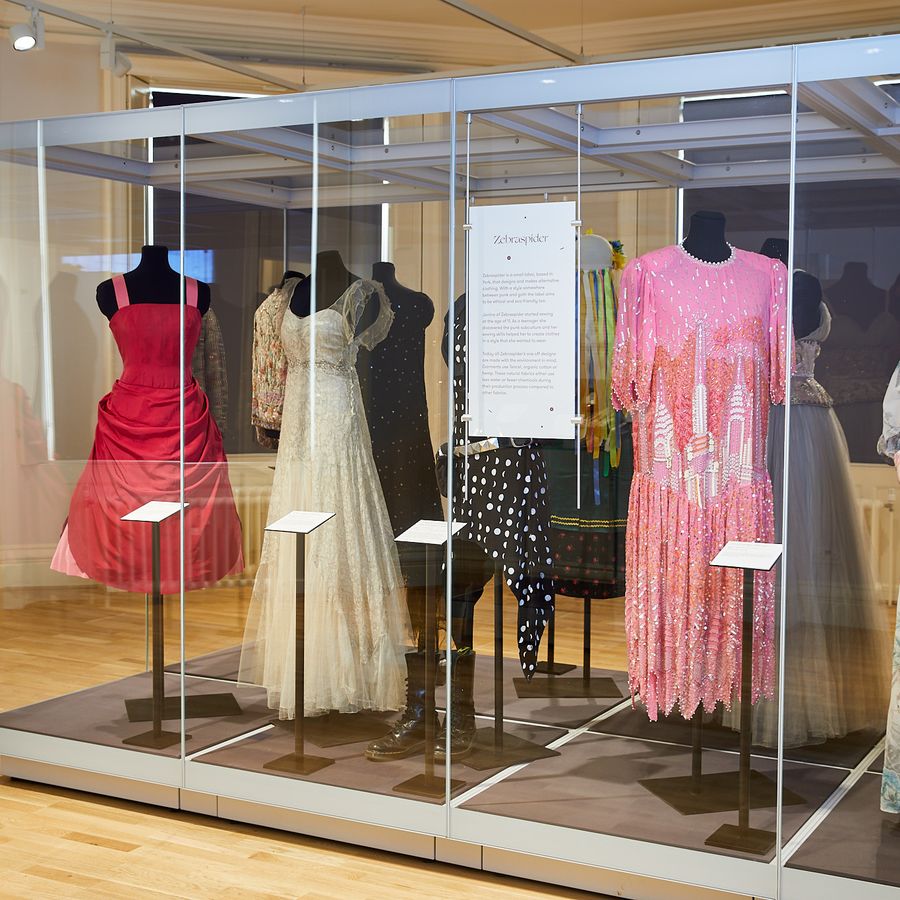
Silhouettes & Shapewear
So, how much of their bodies did women show in the 1800s? The difference between ‘dress’ and ‘undress’ was clearly marked throughout the 1800s. “Undress” for women in the mid-1800s was something more casual and comfortable. Garments were less fitted with a high neckline and long sleeves, showing very little of the body or the woman's shape. Undress was usually worn in the mornings.
For afternoon engagements, “half dress” was expected, so a new outfit was needed. For this, necklines could be worn a little lower and sleeves were shortened to elbow length. However, this was still only a very modest showing of the body.
In the evening, however, the rules all changed and women were expected to be “fully dressed” in eveningwear. Dresses had short or no sleeves and daringly low necklines which would sit just off the shoulder. So full-dress ironically involved garments that revealed the most amount of a woman’s body, and it was not only accepted but expected that a woman would show more of her body in an evening gown.

From an early date the irony of the language was noted. For example, in 1812, Ackermann’s Repository mockingly said:
“The undress of the present day consists of a comfortable kind of habiliment (clothing) closed round the neck and covering the arms; the half-dress is rather more open and exposed; and the full-dress scarcely admits of any covering at all, but in common language would be called complete nakedness.”
Not only did the amount of skin that could be shown change with time of day, but how the body was put on show changed over the course of the century.
Fashions were ‘classical’ at the start of the 1800s, imitating Greek and Roman garments, emphasizing simple lines and a fairly straight silhouette in comparison to later styles. Loose fabric and light undergarments revealed the shape of the body, which could be streamlined through long corsets that extended past the hips.
A high waist was in fashion for the first 25 years of the century, though as the 1820s progressed, waistlines lowered and became tighter. Corsets became an essential element of women’s dress and skirts became wider, with gowns emphasising ‘womanly’ curves.

The skirt continued to widen and became the focal point of fashion with the passing decades, requiring more fabric and petticoats to achieve its swelling shape. The weight and heat of these skirts meant the introduction in 1856 of the ‘crinoline’ — a wide, hooped petticoat to support big skirts — was a sweet relief. Crinolines extended the shape of the skirts outwards into a circular bell-shape.
By 1868, crinolines were less circular and curved out behind a woman, forming a kind of ‘bustle’ — a mass of material at the back which would make even Kim Kardashian appear lacking in the bottom department! This expansion of the size of women’s dresses increased the space a woman took up, contrasting with their expected lesser status to men at the time.
Despite this, slimness was key. An artificially small waist was a symbol of beauty and femininity. Corset wearing signalled self-control and self-discipline, showing a woman to be respectable and moral, whereas a non-corset-wearing woman would be criticized for having a ‘loose’ figure, and equally ‘loose morals’.
Even so, corsets still caused a great deal of debate at the time, and were attacked as devices that “mutilated women.” This account of the fashionable body comes from the magazine The Queen in 1873, which commented that “their padded figures, every line made by milliners (clothing-makers) and none by nature.”
This criticism points to a wider issue; whilst fashionability was supposed to present these figures as ‘natural’, the image of perfection was highly artificial and constructed. The practice of ‘tight-lacing’ was especially controversial as it drew attention to how much the body’s shape could be changed. It involved lacing a corset so tightly that the waist was as small as it could be and seemed out of proportion with the rest of the body.
On the one hand, corsets could be considered as restrictive, uncomfortable garments that harmed and “mutilated” women. At the time they were even falsely accused of causing birth problems, curved spines, and broken ribs.
On the other hand, corsets allowed women to demonstrate independence by being able to take control over their own body; they helped achieve good posture and could make a woman feel confident by being ‘properly’ dressed.

In the 1800s, women had to follow social expectations to be considered respectable, and this included forming their body into the ideal shape of the era through their garments and underwear.
Did the changing ideal silhouettes and the fashions designed to help achieve these objectify and restrict women, or did they allow them to feel empowered? Perhaps women seemed to be objectified as they were forced to mould their bodies into acceptable shapes for the pleasure of others. However, advancing technology brought ‘fashion’ into the reach of many more women than just ‘high society’, and so clothing began to allow more women to assert their own presence and gain visibility. Women could enhance their reputation through their successful achievement of these rules, enjoying social acceptance as the pay-off.
By the end of the century, the ideal of feminine beauty was embodied by ‘The Gibson Girl’ — an artist’s illustration of a slim-waisted, voluptuous woman dressed in a tight corset and slim-fitted gown which emphasized the bust and rear. It is easy to see similarities to the modern Kardashian silhouette, showing how the idea of a fashionable silhouette and shaping of the body has continued into recent times; though this is now more often achieved by diet, exercise or cosmetic surgery than with a corset and layers of fabric!
By Emily Yates, What Shall I Wear exhibition volunteer
